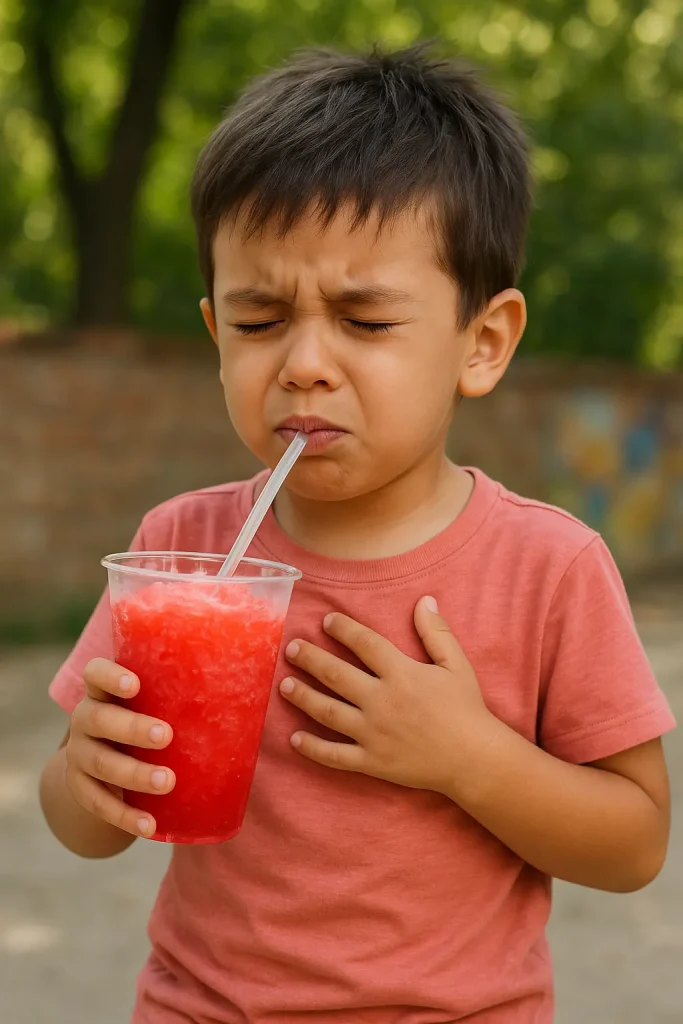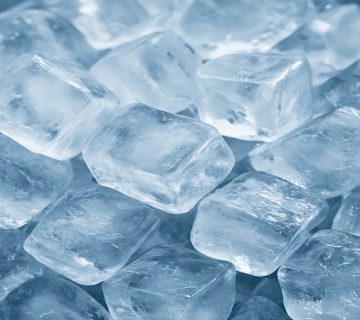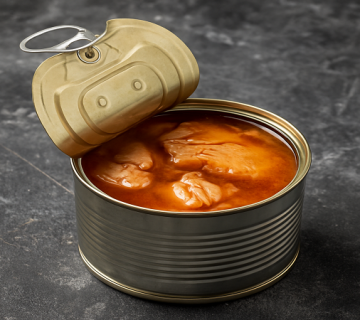Introduction:
The popularity of ice drinks rises sharply during hot seasons, with both small local juice shops and large beverage brands competing to offer attractive and refreshing products that quench thirst in scorching weather. However, one aspect often overlooked is food safety. Many parents focus on the appearance or taste of ice drinks when buying for their children, while hidden ingredients in these drinks can pose serious health risks, especially for children under 7.
In June 2025, the UK's Food Standards Agency (FSA) issued a new warning about the presence of glycerol in ice drinks. The alert indicated that consuming this substance in high amounts could be extremely dangerous for children.
What is Glycerol and Why is it Used in Ice Drinks?
Glycerol is a chemical compound naturally present in some foods. In the food industry, it is used as a sugar substitute or an anti-freezing agent. In ice drinks, glycerol helps maintain a semi-frozen texture, creating the "slush" or crystalline ice effect. Without glycerol, these drinks would become too solid and lose their appeal.
The important point is that glycerol levels in ice drinks are much higher than in other foods. While small amounts are generally safe in some foods, in ice drinks, the concentration can reach levels hazardous for children.
Health Risks of Glycerol for Children:
According to the FSA, ice drinks containing glycerol may cause the following in children:
Severe hypoglycemia (drop in blood sugar)
Nausea and vomiting
Dizziness and extreme weakness
In severe cases, even unconsciousness
These risks are particularly high in children under 7 due to their lower body weight and limited ability to metabolize high doses of glycerol.
The Role of International Food Safety Standards (SFBB):
One of the important frameworks in food safety is SFBB (Safer Food, Better Business). This standard emphasizes hygiene and safety principles throughout the entire food production chain—from raw material selection to production, storage, and distribution.
If ice drink manufacturers follow principles similar to SFBB, the risk of excessive use of substances like glycerol is significantly reduced.
SFBBCERT: Ensuring Safe Food for Consumers
One way for manufacturers to build consumer trust is by obtaining the SFBBCERT certification. This certificate indicates compliance with national food safety and hygiene standards. Products with SFBBCERT are periodically evaluated, which reduces the likelihood of overuse of chemical additives.
Recommendations for Parents:
Avoid purchasing ice drinks without proper labeling or from unauthorized sources.
Do not give industrial ice drinks potentially containing glycerol to children under 7.
Choose products with SFBBCERT and relevant health approvals.
Limit ice drink consumption to once or twice a week.
Prefer homemade natural alternatives, such as frozen fruit juices.
Responsibilities of Manufacturers:
Food manufacturers must recognize that hygiene compliance is not only a legal obligation but an ethical necessity. Suggested actions include:
Using the minimum amount of glycerol or similar additives.
Regularly testing products in accredited laboratories.
Including necessary warnings on packaging, especially for sensitive groups like children.
Training staff according to SFBB guidelines.
Obtaining SFBBCERT as proof of food safety compliance.
Consequences of Neglecting Ice Drink Safety:
Ignoring the issue of glycerol in ice drinks can lead to:
Increased food poisoning cases in children
Decreased public trust in manufacturers
High medical costs for families
Fines or closure of non-compliant production units
Conclusion:
The FSA’s warning about the dangers of glycerol in ice drinks serves as a wake-up call for countries worldwide. Ensuring food safety, following international standards like SFBB, and obtaining SFBBCERT certification helps guarantee that children and families can enjoy ice drinks that are safe and healthy.





No comment